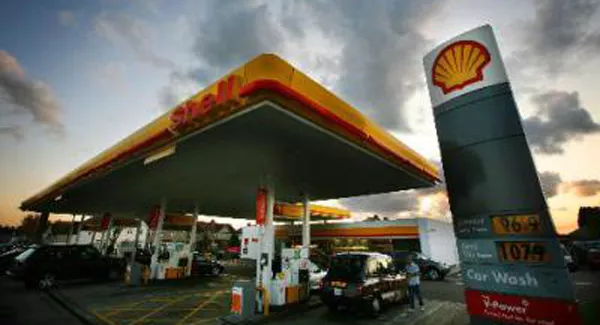Greenwashed rhetoric is such a staple of the oil industry that it’s easy to assume every energy executive talking about climate and the transition to a zero-carbon economy is just mouthing words.
Barely a year after BP chief executive John Browne promised “action and solutions” on climate change in a 1997 speech, he led the then-biggest oil takeover in history with the acquisition of Amoco.
On his retirement a decade later, after years of rebranding about moving “beyond petroleum,” he left a base of oil and gas reserves more than twice the size of the one he inherited.
So events at BP’s European rival Royal Dutch Shell is worth watching.
The rhetoric isn’t all that different – lots of talk about making sure “Shell can thrive through the transition of the global energy system”, as chief executive Ben van Beurden told an investor meeting this week.
What’s different is that the company appears to be putting its money where its mouth is.
Look at reserves, the metric that gave the lie to BP’s green makeover.
An oil company that doesn’t increase its reserves eventually runs out of product to sell, so having 10 years of reserve life is traditionally considered a bare minimum for oil supermajors -- Shell, Exxon Mobil, BP, Total, Chevron, ConocoPhillips, and Eni.
Shell crossed below the 10-year level all the way back in 2016, and the figure at the end of 2018 stood at just 8.5 years.
Its reserve replacement ratio – new fields as a percentage of barrels sold during the year – slumped to 27% in 2017, then limped up to 53% last year.
It’s not unheard of for this measure to fall below 100%, thanks to the volatility of oil development and reserve downgrades when prices fall – but when it happens on a consistent basis a company is in one sense literally running out of oil.
For a business that, by revenue, is the largest listed oil producer after PetroChina, this is fairly extraordinary.
The only supermajors to have fallen below 10 years of reserve life this century are Eni briefly in 2006, and Shell itself two years earlier, when a historic overstatement of reserves led to a massive downgrade, prompting the departure of executives, shareholder lawsuits, regulator fines, and a then-record $15bn (€13.33bn) capital expenditure plan to make up the shortfall.
If Shell was really concerned about being left out of the next boom in petroleum demand, you’d expect it to be working hard to reverse this.
But if anything, the opposite is happening.
Of its roughly $10.5bn of annual growth capital spending over the first half of the 2020s, only about $1.5bn a year will go to upstream oil, according to a presentation this week.
Another $2bn goes to its gas business, but the remaining two-thirds of total growth capex spend will be spent on downstream processing and power.
The latter is a brand-new business for Shell, which management hopes will make it the world’s largest electricity company by the 2030s.

Forecasts more than a decade in the future are easy to make and break, but the same doesn’t go for shorter-term promises to investors.
The company will pay $125bn back to shareholders – averaging $25bn a year – against capital spending of $30bn a year through the 2021 to 2025 period, Mr van Beurden said this week.
That’s distinctly high for an industry that’s historically liked to reserve the lion’s share of cash for investment in future growth.
One explanation is that Shell is still atoning for the capital that the oil industry wasted during the last boom, and making extravagant promises to regain shareholders’ trust.
Here’s an alternative interpretation, though -- it’s a sign of a company having genuine doubts about the long-term future of its core business.
Weak investment in reserves growth; unusual priorities for growth capex, and promises around shareholder returns all suggest a business with its eye on a coming plateau in oil demand.
Shell is behaving like an income stock rather than a growth stock.
For shareholders, that may be good news. For its peers in the industry, it’s a wake-up call.
Bloomberg






